The Vineyard Gazette this week completed its first major building expansion and renovation at South Summer street and Davis Lane in Edgartown, the newspaper’s home since early 1939. This Sunday, as the newspaper enters its 139th year of publishing without missing a single issue, the Gazette will open its doors to all the Vineyard community from noon to 5 p.m. for a house warming and public inspection.
In 1939, the new quarters of the Gazette were its first to be designed and partly constructed specifically for a community newspaper. “For the first time in almost ninety-three years the paper proclaimed in a special edition that March, “the Vineyard Gazette has a building of its own. In moving into these new quarters, the Gazette has desired to display its confidence in the future of the Island of Martha’s Vineyard, and to equip itself to meet the challenges of the future.”
Indeed, the new offices must have seemed cavernous in 1939. Facing South Summer street was the house built in the 1760s by Bradford Smith, a militia captain in the Revolutionary War. Built behind it was the new back shop designed by the Boston architects Griswold & Gulick, its “monitor” roof providing light for the work of composing and printing a newspaper by linotype and letterpress.
Four and a half decades later, the Vineyard Gazette had outgrown its plant, and the paper faced a basic decision: build and move again into new quarters, or expand its offices in the Dukes County seat of Edgartown. There were strong arguments for a new plant, perhaps centrally located on the Island. It would be less expensive. It would alleviate parking difficulties each summer. And it would involve none of the challenges of printing papers amid the dust of carpentry, meeting deadlines between power interruptions, conducting business over the racket of power equipment, dodging wet paint and holes in the floor.
Arrayed against and outweighing all these considerations was the Gazette’s sense of its own history and commitment as a community newspaper. Recalls Richard Reston, the Gazette’s executive editor: “We tried very hard in this project, an enormous one for a newspaper of our size, to practice what we have believed in editorially in the Vineyard community for nearly a century and a half. The decisions were not easy at any time during the last year and a half of construction and restoration.
“We have argued strongly and always for preservation of the best of Vineyard tradition, for keeping true to our character and principles and all that makes the six towns of this Island a special community of people. But we also have argued that bold steps into the future, as is this building project for the Vineyard Gazette, are possible with careful planning and thought and imagination and commitment.
“And so we tried to create a good and lasting marriage in what we have done with both the old and the new, inside but one building that houses the Vineyard Gazette.”
And Says Mary Jo Reston, the newspaper’s business manager:
“We felt quite strongly that it was important for the newspaper to stay downtown, with easy access by the community. The paper dates to 1846, and the historic sense is something that has been important over the years to preserve. It was appropriate for us to stay in this old building and try to make it work.”
With this commitment to its present location, the Gazette turned to architect Joseph L. Eldredge of Boston and the Vineyard, whose design credits in Edgartown include the public library and the restoration of the Old Whaling Church.
“I’m fascinated by the whole process of journalism and printing,” says Mr. Eldredge. “1 was brought up in a newspaper community. I carried papers as a kid. I’ve had close friends in the newspaper business. And I’ve been on the school paper in every school I ever went to.”
Mr. Eldredge was asked to design a new Gazette office enabling the staff to carry on its work safely, comfortably and efficiently. He was asked to respect the architectural character of the neighborhood in the new building’s exterior design, and to preserve within the intimate experience of producing a small community newspaper.
The limitations on the design of the new plant were considerable. The back of the production shop was extended only 14 feet; a new stairwell was added on the Summer street side; a glassed logia display area was added along Davis Lane and the north wall of the darkroom was moved slightly outward. But these small expansions, and the addition of a second floor where the monitor roof once topped the production shop, have doubled the usable working space of the Gazette.
In the expanded back shop downstairs, the darkroom was moved to enlarge the production area in which pages of the newspaper are prepared. “Now we can paste up 32 pages or two sections of the Gazette at once rather than 16 says Alison Shaw, production manager. “We just aren’t in each other’s way as much any more. It’s a much more efficient place to work.”
The new back shop includes an enclosed pressroom, which for the first time permits temperature and humidity control in the printing area. And it includes separate space for the mailing room operation which wraps and delivers the Gazette each Friday all year and each Tuesday for nearly five months of the year, to the Vineyard community and to readers around the nation and the world.
Upstairs, the biggest addition to the Gazette is the newsroom, single open area with skylights, wood beams and dormer windows. A glass-walled library has been added for books and the Gazette’s paper and microfilm files dating to 1846. At the back of the second floor are a conference room, a darkroom, a filing area for photographs and office space,
This major building expansion was accomplished literally on top of the Gazette staff as it went through the process of putting out the newspaper each week. Carpenters first constructed a ceiling over the production shop and press area, then built a new roof over the old one. Only when the new roof was completed did the builders disassemble the old Superstructure and toss the pieces out the windows into waiting trucks.
During this period, the production staff grew accustomed to working with the noise of construction over their heads, and the press had to be wrapped entirely in plastic each week to shield it from dust.
The new additions to the Gazette were completed in the spring of 1983 and the editorial staff moved upstairs last May.
The business and advertising staff moved into this new environment over the winter now past, evacuating the 1760s front office while the work of careful and much needed restoration proceeded.
The restored front office is now the new public entrance to the Vineyard Gazette, and an announcement of the paper’s sense of history. “We tried very hard not to change the character of the old building in any way,” says Mrs. Reston. “There were certain changes we felt were necessary to make the building work as a newspaper office, as a business office. But we quarrelled with ourselves during this entire period over anything that wasn’t absolutely necessary to making it work. We wanted to preserve the old office, right down to the windows and the details of trim.”
The restoration project involved the disassembly Of the old building down to the beams, revealing the need for major rebuilding of the frame and underpinnings. The work extended from floor joists at ground level to the new roof above, and in between such details as historically correct wood trim, preservation of original floor boards and use of paint colors authentic to the building’s period.
One detail of the restored Revolutionary structure is of a sort that Captain Smith could scarcely have imagined in 1760. Adjoining the business office upstairs is a closet-like space with ducting for temperature and humidity control. It’s a computer room and soon it will house a business computer to complement the Gazette’s word-processing computer system.
Visitors to the Gazette offices this Sunday afternoon will be able to see demonstrations of the Harris phototypesetting computer system centered downstairs. And down the hall and around a corner they will encounter a glass public corridor area where now on display is the restored Seth Adams hand press which printed the first Vineyard Gazette in 1846.
“Old and new combined in the home of Martha’s Vineyard’s newspaper,” proclaimed the headline over photographs of the new Gazette offices in 1939. The “new” at the Vineyard Gazette has changed since then - the linotype machines are gone the way of the party line telephone. But still the sense of history lingers in the restored Revolutionary house in the front, in the pressroom in the back where the old Seth Adams is visible - even in the newsroom, where video terminals coexist with venerable Underwood and Royal typewriters and seasoned wood desks.

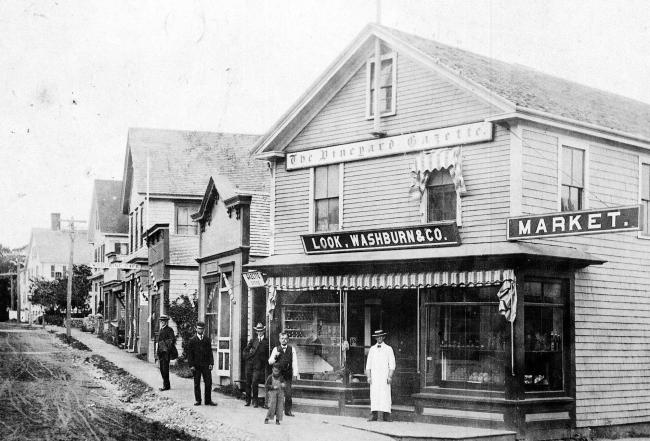




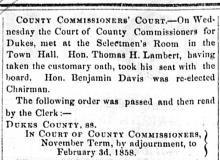
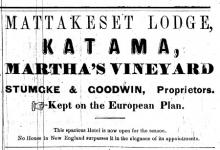
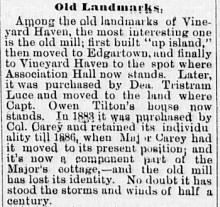
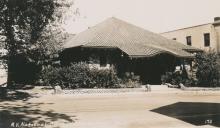
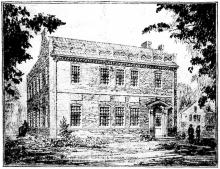
Comments